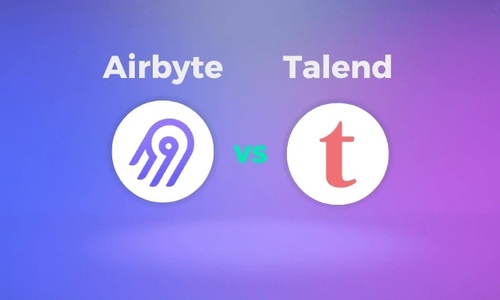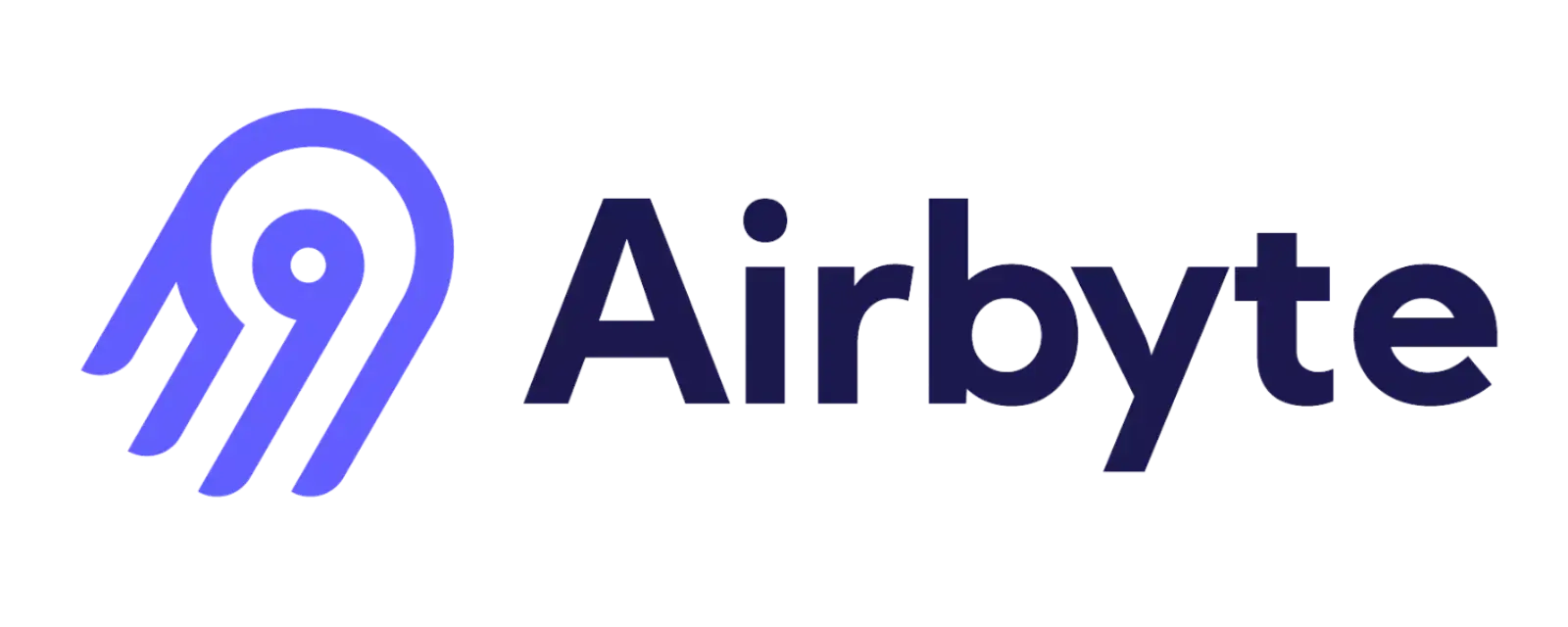In today's data-driven business environment, organizations must find ways to manage and integrate vast amounts of data from diverse sources. Data integration platforms offer a solution that leads to streamlined data operations. Airbyte and Talend have ETL features that make them useful for moving data from multiple sources to a database, data lake, or data warehouse. However, they have some functionality and pricing differences that should influence your decision.
Five top things to note regarding Airbyte vs. Talend include:
- Airbyte and Talend have open-source versions data teams can use to build flexible, customized solutions.
- Airbyte has a larger library of pre-built connectors than Talend.
- Airbyte offers a free tier – with paid tiers available – but Talend doesn’t publicize its pricing model.
- Talend can give you access to more data-focused tools, but people without technical backgrounds might find some of these options confusing.
- People unhappy with Airbyte vs. Talend have plenty of other ETL options.
In this article, we delve into a comprehensive comparison of Airbyte and Talend, two leading players in the data integration space. We aim to provide you with a detailed analysis of the pros and cons of each platform, enabling you to make an informed decision when selecting the right solution for your organization.
Overview of Airbyte vs. Talend
Airbyte and Talend stand out as two popular platforms for organizations that need to move data from multiple sources to a single destination. Both have fairly intuitive user interfaces and dashboards that appeal to non-technical users. You also have opportunities to implement customized pipelines as needed.
|
Airbyte |
Talend |
|
|
G2.com user score |
||
|
Key Features |
Airbyte is an open-source SaaS data integration solution with a strong community of users, pre-built data connectors, and customizable features. |
Talend is a SaaS data integration platform with several tools designed to meet diverse needs, such as making low-code data pipelines and batch data processing. |
|
Pre-Built Connectors |
Airbyte has a growing library of 350+ connectors, many of which were made and tested by users. |
Talend's library includes more than 140 pre-built connectors. |
|
Pricing |
Airbyte has a free Connector Program tier, Growth tier that charges $2.50 per credit, and Enterprise tier with custom pricing. |
Talend has four plans, but you need to contact sales for pricing.
|
|
Customer Support |
Paid plans offer online support, but those in the Connector Program can rely on community tools, including Discourse and Slack channels. |
Multilingual customer support is available via the Talend community, online documentation, and support case messages. |
What Is Airbyte?
Airbyte is an open-source data integration platform that comes with a large library of ELT connectors. It has a low-code user interface that makes it easy for practically anyone — even people without technical backgrounds — to connect data sources to destinations.
As an open-source project, though, Airbyte gives data engineers, programmers, and other tech-savvy professionals opportunities for customization. The platform’s open-source nature also means programmers can build and share data connectors, which explains why it has such a large library. Airbyte even provides directions for building sources in Python and Java.
The great thing about Airbyte is that it meets you where you are. If you work as a data scientist, you can take advantage of advanced features and customize the platform to match your needs. If you work in marketing or sales, you can use out-of-the-box data connectors to build ETL pipelines without any coding.
Airbyte Key Features
Key features that make Airbyte a good ETL platform include its:
- Large library with more than pre-built connectors.
- Connector Development Kit (CDK) for building new connectors — or editing existing connectors — in practically any programming language.
- SQL and dbt project scripts for customized data transformations.
- High-volume data replication with change data capture (CDC) and SSH tunnels.
- Large community of users that contribute custom connectors to the Airbyte library.
Airbyte Pricing
Airbyte has three scalable pricing models. As an open-source platform, it’s not surprising to find a free tier. You'll need to choose a paid plan if you require access to more advanced features, though.
Free Connector Program
Airbyte’s free version lets you create an unlimited number of workspaces and move an unlimited amount of data. However, you can only use alpha and beta connectors, which could mean you run into drag-and-drop pre-built connectors that don’t work as expected. Unfortunately, the free tier doesn’t give you access to customer support. When you run into problems with Airbyte connectors, you have to find your own solution.
Growth
At the Growth tier, you pay $2.50 per credit. Credits apply to the volume of data you sync. You can use the Airbyte cost estimator to calculate approximately how much you should expect to pay per month. According to the calculator, you'd spend about $4,320 per year replicating 30GB of data. 690GB would cost about $41,800 per year. The number of API sources you use also influences the price.
Paying for Airbyte offers you access to:
- Airbyte API
- Cloud support
- SSH (secure shell protocol) tunnels
The Growth tier also gives you access to everything in the Free Connector Program.
Enterprise Custom
Enterprise-level users should contact Airbyte to get a custom price based on their needs.
Airbyte Use Cases
Airbyte has multiple use cases in engineering, analytics, and marketing.
One client used Airbyte to synchronize data from Postgres to BigQuery. Airbyte was able to store replication jobs and transfer data to BigQuery, where more teams within the organization could access it.
Another client needed to receive notifications when errors occurred in data replication and data migration pipelines. They struggled because the pipelines were quite complex. Airbyte worked with dbt tests and DVT — Google’s Data Validation Tool — to monitor pipelines and send notifications to a Slack channel.
What Is Talend?
Talend is an end-to-end data management platform. The Talend Studio Suite gives you access to several ETL tools and related solutions, including the open-source Talend Open Studio, Talend Data Fabric, and Stitch ETL.
It seems that Talend wants to fulfill all of your data management needs. While Stich makes it easy for you to create data pipelines without coding, Talend Data Fabric automates data quality checks so information in your data lakes is ready for business intelligence tools to analyze.
Talend has a good reputation — 4 out of 5 stars on G2 — as an ETL solution, but some users wonder whether the platform spreads itself too thin by trying to fulfill every data need. Whether that’s true likely depends on how you plan to use Talend’s solutions.
Talend Key Features
The key features that can make Talend an important part of your data stack include its:
- Data integration: adds relevance to otherwise disorganized raw data.
- Flexible APIs: can connect diverse third-party apps.
- Library: more than 140 source connectors.
- Centralized dashboard: creates a single source of truth.
- Orchestration: adds viability and control to data moving through pipelines.
Want to learn more about Talend and its alternatives? Read Talend vs. Matillion vs. Integrate.io to learn more.
Talend Pricing Model
Talend doesn’t publicize its prices, so you need to contact sales to get a quote. However, the amount you pay depends on which solutions you plan to use. The company breaks its platform into four sections:
- Stitch: A no-code data integration tool for analysts.
- Data Management Platform: A tool for cloud and on-premises data management.
- Big Data Platform: An analytics solution suitable for companies that want to use machine learning, artificial intelligence, and business intelligence tools.
- Data Fabric: A complete data integration platform developed for enterprise users.
Talend Use Cases
Talend has plenty of use cases showing how well it can work with Salesforce, Hadoop, Excel, AWS Redshift, and many other data destinations and sources.
Talend use cases include:
- Extracting and transforming Excel data before combining it with data from other sources and loading it to a destination.
- Collecting data from Salesforce and blending it with marketing data from external sources to produce meaningful insights before loading the processed data back into the Salesforce CRM.
- Using ETL, reverse ETL, and ELT pipelines to extract and transform >Amazon Redshift data.
Pros and Cons of Airbyte vs Talend
|
Airbyte |
Talend |
|
|
Pros |
|
|
|
Cons |
|
|
Airbyte User Reviews
What Users Like
Airbyte only has seven reviews on G2, but those people give it a favorable 4.1 out of 5 stars. Some positive comments from Airbyte users include:
“Airbyte allowed us to copy millions of rows from SQL Server to Snowflake with no cost and very little overhead.” —Heather S., Manager, Development & Database Administration
“I have been using Airbyte for the past 4 years and also involved actively in open-source contribution. It is an awesome tool to schedule your batch and real-time jobs.” —Tushar M., Data Engineer
“The ease of use both in-cloud and open-source is fantastic. The big selection of connectors, both source and destination helps immediately. Additionally there are different support channels.” —Verified user in
What Users Dis-Like
Of course, Airbyte has room for improvement. Users complain that:
“Currently, the self-hosted version doesn’t have a user management feature yet, so rolling it out to a larger team is not yet as streamlined as other OSS tools. But, it’s a minor and temporary gap which I’m sure would be filled in a future release.” —Verified User in Logistics and Supply Chain
“[Airbyte has] frequent new releases, error handling isn’t great, security (lack of it).” —Verified User in Computer Software
“Sometimes its scheduler stops working, but it’s manageable.” —Tushar M., Data Engineer
Not sure that Airbyte has the features you need? Consider these Top 6 Airbyte Alternatives.
Talend User Reviews
What Users Like
Talend has a lot of benefits that users enjoy. Some of the advantages include:
“All the services and features you require for big data extraction, loading or transformation, you name it, and it is there. I have used this software in my company project and it gives sufficient performance. “ —Samreen S., Project Engineer
“It is pretty intuitive to create job flows and it provides quality services for data integration and particularly helpful for the Enterprise application integration. It has friendly user interface and community support provides solutions to all kinds of question. Overall experience with Talend is really good.” —Yanwu Z.
“Talend Data Integration is the best ETL tool available now by far. It is full of features and built-in components that save you the time of writing them from scratch. The build code is in java, and you can easily set up automatic jobs.” —Aumen H., Junior Research Scientist
What Users Dis-Like
Some complaints representative of Talend users include:
“Setting up and configuring the software is very hard. Also it has a learning curve for graphical interface.” —Kingston Joseph
“Since the application is java based, you can expect specific error messages that could be misleading and make it hard to find the solution. I also faced the studio edition of Talend behaving really slowly, even with great hardware.” —Madjamkkumar S., Senior Data Engineer
“The connectivity with external services like Azure is not so fluid like in the Azure Data Factory. Also, when the data quantity is huge, Talend jobs become very slow compared to other services.” — Arijit C, Data Engineer
How Integrate.io Can Help
Integrate.io is a no-code/low-code ETL platform with a library that includes hundreds of pre-configured connectors. Try it yourself by starting a free, 14-day trial today (and don't forget to schedule your trial set-up meeting) to see how Integrate.io can streamline your workflows, improve data quality, and help you discover trends that lead to business success.
If you have unique business requirements, schedule an intro call with one of our experts. Our team can help you identify pain points and find solutions that benefit your organization.













